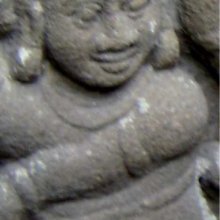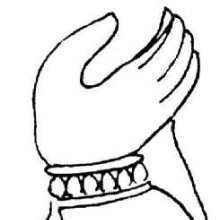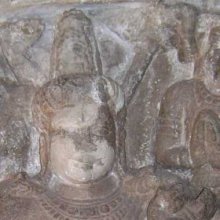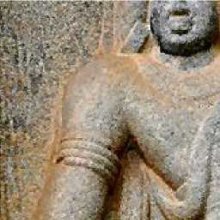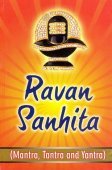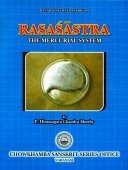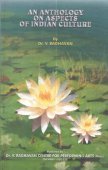Gem: 2 definitions
Introduction:
Gem means something in Buddhism, Pali, the history of ancient India. If you want to know the exact meaning, history, etymology or English translation of this term then check out the descriptions on this page. Add your comment or reference to a book if you want to contribute to this summary article.
Images (photo gallery)
(+27 more images available)
In Buddhism
Tibetan Buddhism (Vajrayana or tantric Buddhism)
Source: ORA: Amanaska (king of all yogas): (Tibetan Buddhism)The (pure) Gem is denoted in the Sanskrit language as Śuddha-Maṇi, according to the thirty-third chapter of the Saṃvarodayatantra: a Buddhist explanatory Tantra of the Cakrasaṃvara cycle.—Accordingly, while describing the no-mind meditation: “[...] Free from meditation and concentration and beyond [both] Yoga and reasoning, he leads people to absorption in ‘suchness’, when the mind becomes steady in awareness. Its form is like [e.g., a pure gem (śuddha-maṇi)] [...] inexpressible by words and even beyond the sphere of the mind”.

Tibetan Buddhism includes schools such as Nyingma, Kadampa, Kagyu and Gelug. Their primary canon of literature is divided in two broad categories: The Kangyur, which consists of Buddha’s words, and the Tengyur, which includes commentaries from various sources. Esotericism and tantra techniques (vajrayāna) are collected indepently.
India history and geography
Source: Singhi Jain Series: Ratnaprabha-suri’s Kuvalayamala-katha (history)Gems and Precious stones were traded under the cloth using hand-signs, according to ancient Indian trading traditions, as was vividly depicted in the Kathās (narrative poems) such as Uddyotanasūri in his 8th-century Kuvalayamālā (a Prakrit Campū, similar to Kāvya poetry).—[...] In the trade of precious stones and gems, it was customary not to utter the value loudly by word of mouth but through a piece of cloth or a scarf on the jewels and pearls to be sold and then the buyer and seller put their hands under the cloth, both of them negotiating by means of some signs conveyed through the fingers of the hands. It is also stated that after taking other goods in exchange and before leaving the place the foreign merchant makes some charitable gifts to the local religious teachers and establishments. [...]

The history of India traces the identification of countries, villages, towns and other regions of India, as well as mythology, zoology, royal dynasties, rulers, tribes, local festivities and traditions and regional languages. Ancient India enjoyed religious freedom and encourages the path of Dharma, a concept common to Buddhism, Hinduism, and Jainism.
See also (Relevant definitions)
Starts with (+18): Gemah, Gemaka, Gemalong hutan, Gemare, Gembiri, Gembirit, Gemda, Gemdali, Gemdamriga, Gemde, Gemdehotte, Gemdemin, Gemdeminu, Gemdhali, Gemdua, Geme, Gemeines speergras, Gemitir, Gemku, Gemliya.
Ends with (+48): Agem, Agemmagem, Alangem, Alangemvilangem, Argem, Badagem, Bahirbunagem, Bajarabunagem, Bara Jyotilingem, Begem, Bingem, Bodhagem, Bunagem, Dalagem, Dalavangem, Dhadoticem Patagem, Dhagem, Dhonagem, Dolyammagem, Donagem.
Full-text (+2038): Cintamani, Mani, Ratna, Suryakanta, Vaidurya, Candrakanta, Navaratna, Maniratna, Gomedaka, Syamantaka, Vidruma, Kaustubha, Kondana, Divyaratna, Ratnakhacita, Somakanta, Kridaratna, Nanaratna, Karketana, Jyotirasa.
Relevant text
Search found 272 books and stories containing Gem; (plurals include: Gems). You can also click to the full overview containing English textual excerpts. Below are direct links for the most relevant articles:
The Garuda Purana (by Manmatha Nath Dutt)
Chapter LXX - Tests of Ruby < [Agastya Samhita]
Chapter LXXII - Tests of Sapphires < [Agastya Samhita]
Chapter LXXIII - Tests of Lapis Lazuli (Vaidurya) < [Agastya Samhita]
Brihat Samhita (by N. Chidambaram Iyer)
Chapter 83 - On Emeralds (marakata-lakṣaṇa)
Chapter 82 - On Rubies (padmarāga-lakṣaṇa)
Rasa Jala Nidhi, vol 3: Metals, Gems and other substances (by Bhudeb Mookerjee)
Part 1 - Characteristics of Moon-stone (chandrakanta) and Sun-stone (suryakanta) < [Chapter XXI - Gems (10-11): Suryakanta (sunstone) and Candrakanta (moonstone)]
Part 1 - Characteristics of Zercon (gomeda) < [Chapter XVIII - Gems (6): Gomeda (zercon)]
Pallava period (Social and Cultural History) (by S. Krishnamurthy)
Necklet (Kanthi) < [Chapter 4 - Material Culture of the People]
Armlets (Keyuras) < [Chapter 4 - Material Culture of the People]
Udara-bandha < [Chapter 4 - Material Culture of the People]
Kautilya Arthashastra (by R. Shamasastry)
Chapter 11 - Examination of Gems that are to be entered into the Treasury < [Book 2 - The duties of Government Superintendents]
Chapter 5 - The Duties of the Chamberlain (sannidhātā) < [Book 2 - The duties of Government Superintendents]
Chapter 7 - The Business of Keeping up Accounts in the Office of Accountants < [Book 2 - The duties of Government Superintendents]
Cosmetics, Costumes and Ornaments in Ancient India (by Remadevi. O.)
1.2. Materials: Gems (Introduction) < [Chapter 3 - Ornaments]
1.2. Materials (r): Various other Precious Gems < [Chapter 3 - Ornaments]
2.5. Hand Ornaments (d): Kaṭaka < [Chapter 3 - Ornaments]
Related products
(+4 more products available)

